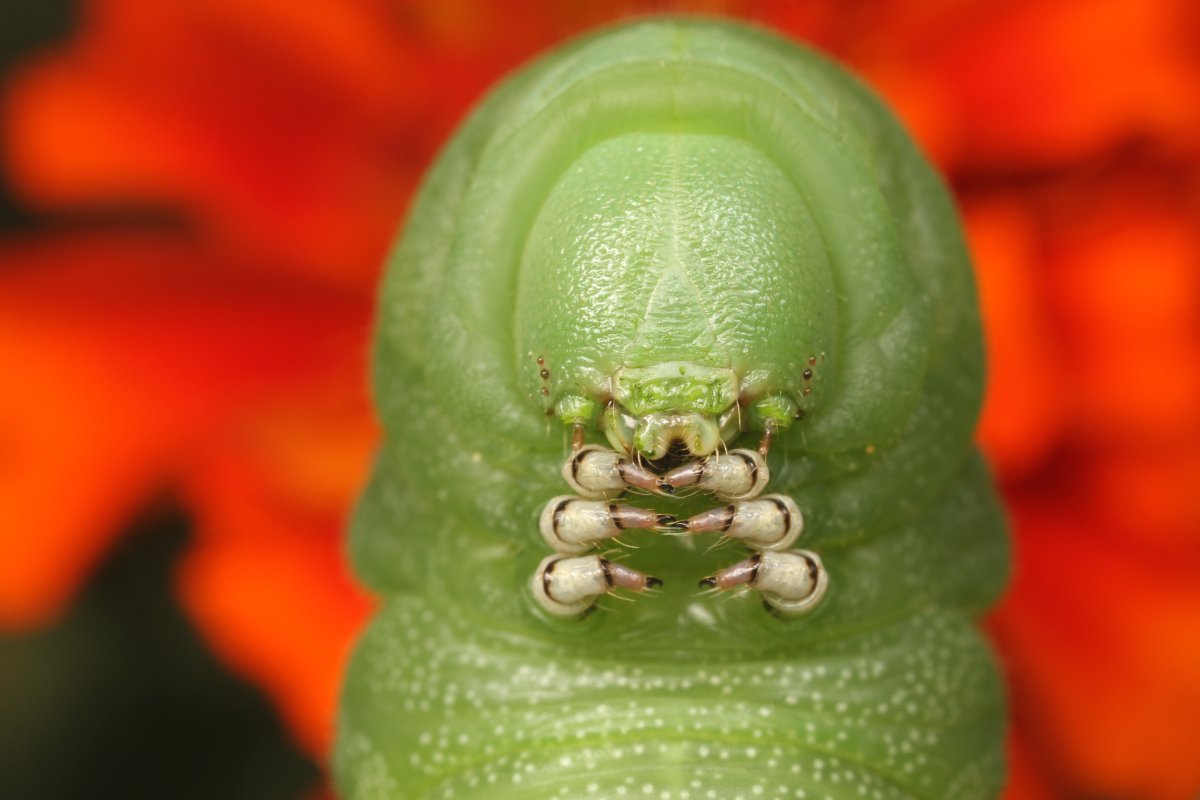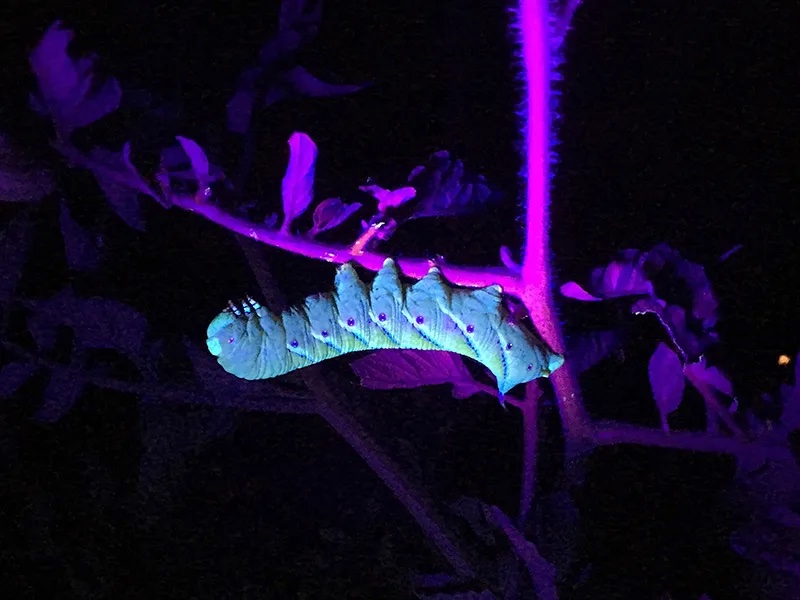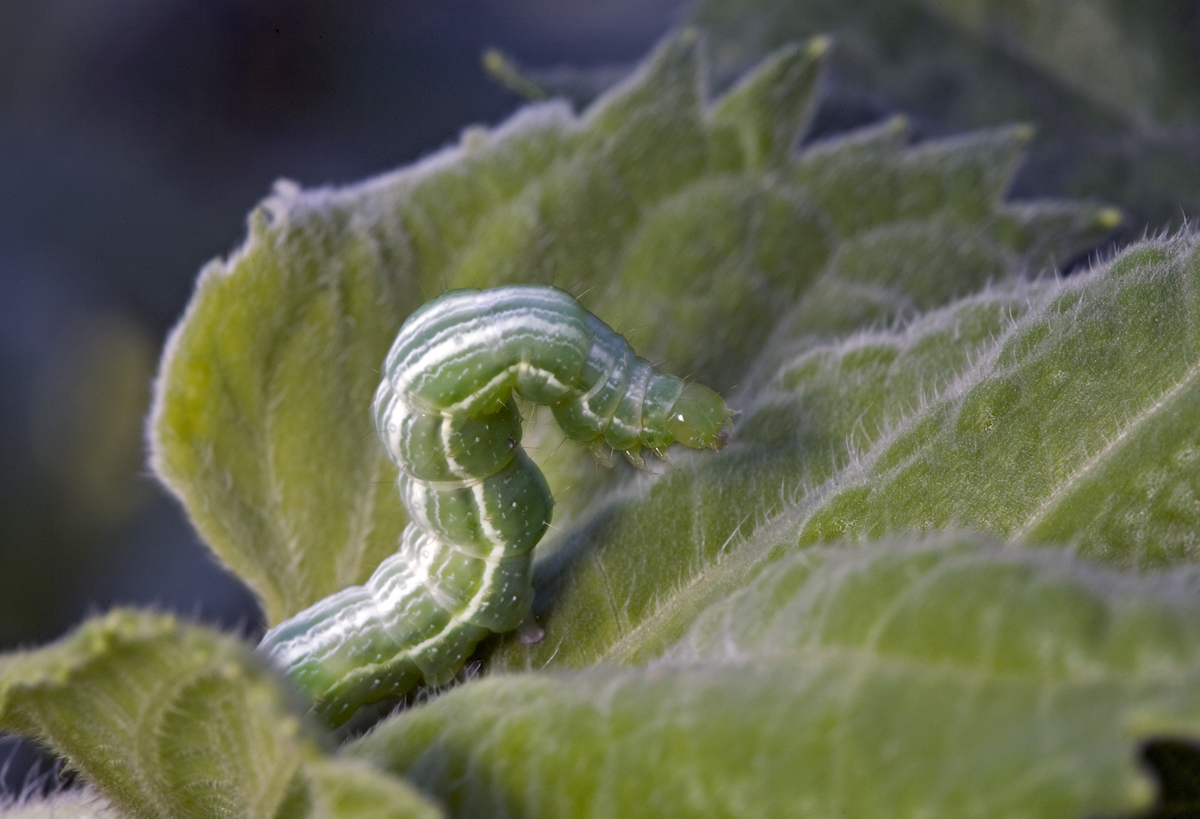

We may earn revenue from the products available on this page and participate in affiliate programs. Learn More ›
While backyard gardens attract some “pests” that are actually beneficial to the ecosystem, they also appeal to a number of insects that are detrimental to plants. While there are caterpillars, which are the larvae of moths and butterflies in the order Lepidoptera, that gardeners welcome to their properties—planting extra pots of dill for swallowtail caterpillars, and making sure there’s milkweed for monarchs—there are others that are unwelcome whenever they turn up: Tomato hornworms, tent caterpillars, and cabbage loopers, for example, have big appetites and can decimate gardens, and even trees, rapidly.
Getting rid of caterpillars in your garden is doable, but you have to act quickly and be diligent. These all-natural methods can help you regain control of your landscape.
1. Hand-Pick Them

SUPPLIES
5-gallon bucket
Dish soap
Gardening gloves
When it comes to caterpillar removal, the fastest way to address the problem is to pick them off by hand.
Fill a bucket about halfway with hot water and a couple of tablespoons of mild dish soap, pull on a pair of rubber or canvas gardening gloves, and head out to your garden to do a different kind of picking.
This time, you’ll want to lift caterpillars from the leaves—checking all of the undersides, where caterpillars are known to hide—and drop them one by one into the bucket to drown. The protective hand gear will ensure that you aren’t stung by the spines on some varieties of caterpillar as you handle them, like the saddleback.
While this method is the most proactive, it also may require repeating to remove the entire population.
Pro tip: Removing tomato hornworms is easiest to do at night. Bring a black-light flashlight with you because hornworms glow in the dark.

Tried-and-True Advice
“Most caterpillars don’t do much damage to garden plants, so I leave them alone. However, I do take action against cabbage loopers, which love munching on my brassicas!
I find the best way to control cabbage loopers and other pest caterpillars is with physical barriers. By keeping vulnerable crops protected with row covers from the very beginning of the season, moths can’t lay their eggs on my plants and I have minimal caterpillar issues. Sometimes I also plant additional dill, parsley, and mustard plants on the side of my garden to act as sacrificial trap crops to entice caterpillars away from my more valuable produce.”
—Lauren Landers, Contributing Writer
2. Empty the Nest
SUPPLIES
A more aggressive way to attack the problem is to destroy the caterpillars’ nest.
You’ll often find these silk-spun homes hanging from tree limbs. Simply punch your implement of choice (either a long sharpened stick or broom handle work well) into the nest itself, then spin and scrape along its interior to remove all of its inhabitants. Afterward, dispose of the nest and its contents in a bucket of warm, soapy water to drown remaining caterpillars.
For the best chance of success, attack the camp early in the morning or late at night to guarantee that the majority of the caterpillars will be in the nest. While immediately effective, this method may also require repeating should any remaining caterpillars rebuild their home.
3. Spray Bt

SUPPLIES
Bacillus thuringiensis
Gardening gloves
Homeowners who aren’t interested in hunting and handling these pests can opt to administer the hands-off—and hand-down most effective—extermination solution, Bacillus thuringiensis (Bt).
This naturally occurring soil bacteria kills caterpillars in a matter of days by destroying the lining of their stomachs. Simply dust its powder or mist its liquid form directly onto your garden plants and wait for the caterpillars to get hungry.
Apply without worry about negative side effects: Bt is completely safe for the plants, their pollinators, pets, and humans. The bacteria is only toxic to caterpillars, as well as some moths and worms who’d like to munch on your greens.
Reapply after a week or two if your infestation still exists, as your first application would have broken down in direct sunlight and rainfall.
4. Make Homemade Caterpillar Deterrent
SUPPLIES
Spray bottle
Molasses
Dish soap
Garlic
Vegetable oil
If you’re not ready to shell out for caterpillar control, you can mix up a home remedy to get the job done. For plants, a regular spray of a molasses solution (1 tablespoon molasses, 1 teaspoon dish soap, and a liter of warm water) or a garlic solution (three crushed cloves of garlic, 1 tablespoon vegetable oil, 1 teaspoon dish soap, and a liter of water) will deter insects from munching.
